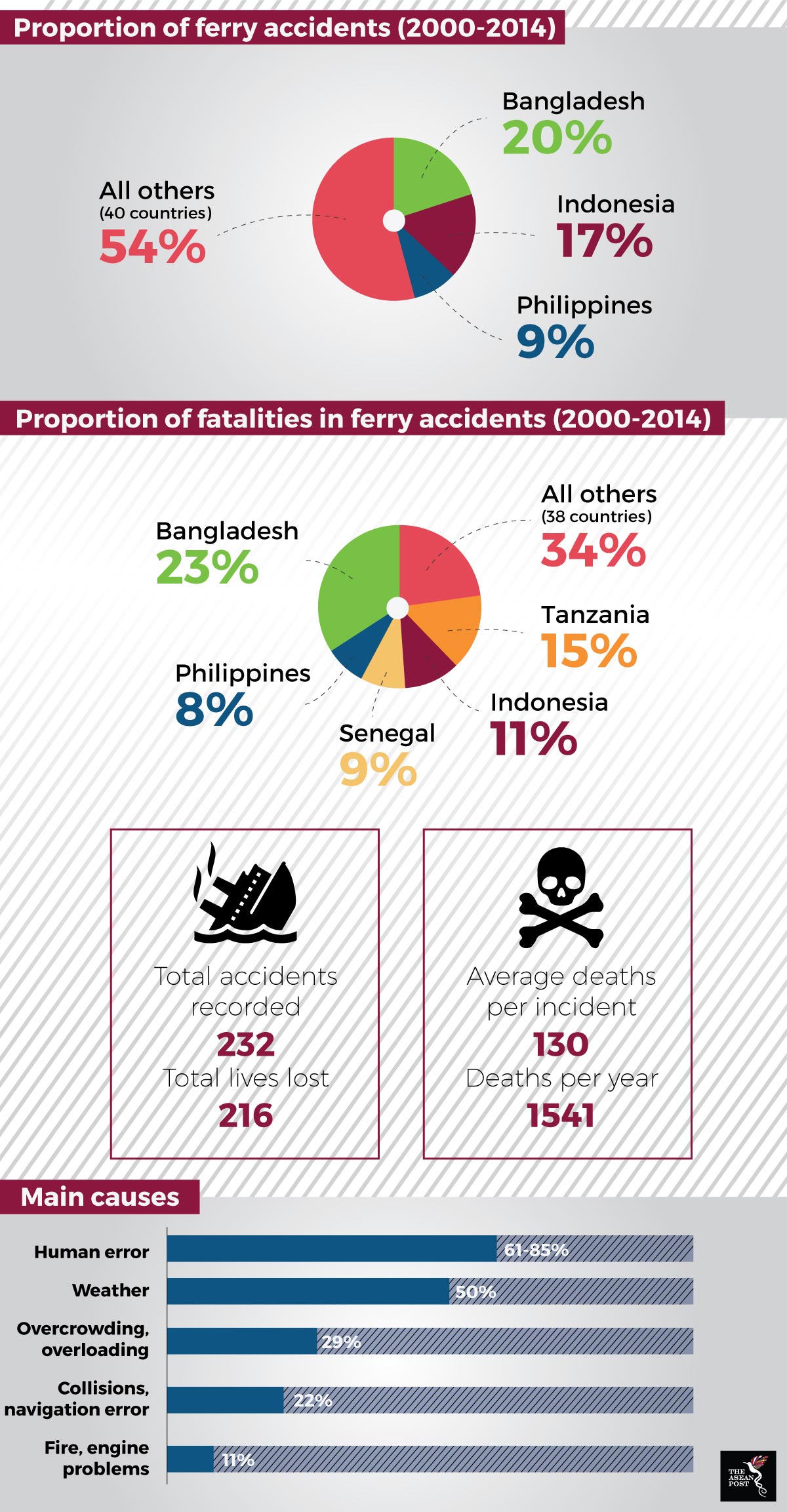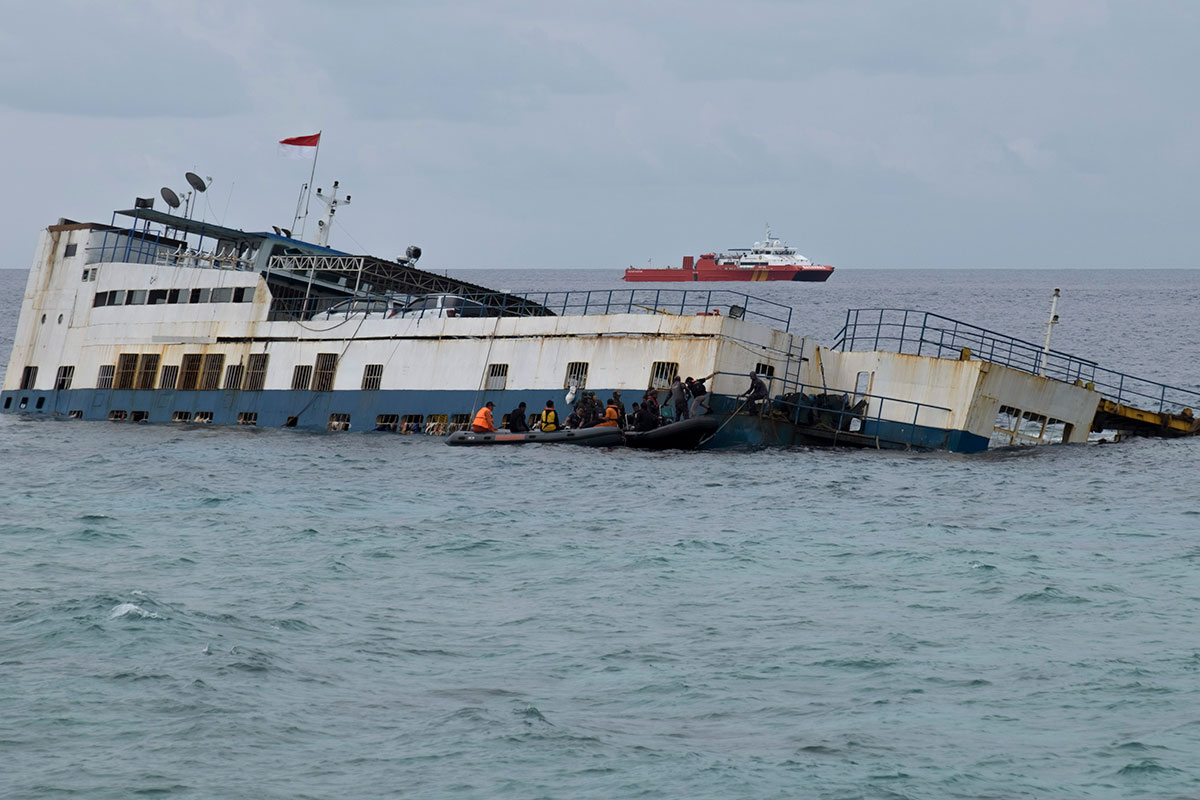It was a fun outing at sea for everyone and nothing seemed amiss. At around 4pm, the Phoenix departed for Phuket island with its 105 passengers. 10 minutes into the journey, the sky turned dark. Half an hour later, the boat started shaking violently as a monsoon storm – said to be the biggest storm in five years – hit the boat some seven kilometres from shore.
The ferry started rocking violently as giant waves buffeted it. Then it started listing, tossing its passengers to the deck. As some of the passengers jumped overboard, the boat flipped over and sank. “I grabbed a rope after I fell into the water and when I looked up, the whole boat was missing,” recounted survivor Zheng Lancheng in a WeChat account owned by Beijing’s Boya Tianxia Media Group.
On that fateful 5 July, Zheng lost four family members – his wife, son, daughter-in-law and granddaughter – in a tragedy that officially claimed 47 lives. Another boat in the vicinity, the Serenata, also capsized but fortunately all 42 onboard were rescued.
Even as search and rescue operations were ongoing, Thailand’s Deputy Prime Minister, Prawit Wongsuwan laid the blame for the tragedy on Chinese tour operators who used Thai proxies to bring tourists in from China, and disregarded Thai safety laws.
In a widely circulated video clip, he told local reporters that the accident was “entirely Chinese harming Chinese. The boats were theirs and they ignored warnings and insisted on sailing out to sea. We were not responsible for that – they were. They have to resolve this themselves.”
China accounts for 10 million out of 35 million tourists who visit Thailand each year, contributing almost 29 percent of the industry’s revenue. Phuket itself welcomes 3 million tourists.
Prawit’s remarks drew an angry response. The state-run China Daily called them “provocative and irresponsible.” Within days, over 7,300 hotel bookings for July and August were cancelled, wiping out 10 to 15 percent of total business in Phuket. The actual figures could be higher; the Southern Hotelier’s Association said only 19 of its 179 members have reported in so far.
One accident after another
A spate of maritime accidents made the news headlines in recent weeks, raising questions about the safety regulations in place and their enforcement.
Just two days prior to the Phuket incident, the KM Lestari Maju ran aground off Selayar Island near Sulawesi, Indonesia. Officials said 34 people died in the incident while 155 passengers were rescued. The captain said strong winds and high waves damaged its portside hull and the ferry started taking in water. He ran the boat aground close to shore to reduce the number of casualties. The police arrested and charged him with negligence.
An overloaded boat believed to be ferrying 44 illegal immigrants from Indonesia’s Batam Island to Johor in Malaysia capsized on 2 July. Malaysia’s rescue team saved 25 people and retrieved seven bodies while the rest were missing.
On 17 June, the KM Sinar Bangun, said to be carrying as many as 200 people and 60 vehicles capsized and sank in Indonesia’s Lake Toba. The ferry’s maximum capacity was 60 passengers. Only 19 people survived with the remainder missing or dead.
Five days later, the KM Ramos Risma Marisi broke down in the same lake and sank. Four passengers survived and one was reported as missing.
Another ferry capsized on New Year’s Day at Tanjung Selor, North Kalimantan, Indonesia. It was carrying 45 passengers and sank minutes after leaving the pier. At least eight people were reported killed in the incident.
Siswanto Rusdi, director of Indonesia’s National Maritime Institute, said the republic’s maritime problems could be due to a lack of funds and unclear jurisdiction. Local governments do not have enough funds or manpower to implement and enforce safety standards. Although the Ministry of Transport introduced the Non-Convention Vessel Standard in 2009, there are no clear guidelines on who should actually implement it, Siswanto said.
Lost confidence
Following the Phuket incident, authorities have scrambled to regain tourists’ confidence. The governor, Napat Prodthong, urged the government to establish a command centre in Phang Nga to regulate all Andaman Sea tourist activities, set up inspection points for all incoming and outgoing vessels, and to monitor tourist movements through CCTV and surveillance systems. The command centre, estimated to cost 500 million baht (US$15 million) to 600 million baht (US$18 million), will enforce safety and related laws at Phuket, Krabi, Trang and Phang Nga provinces.
The Thai government also deployed its naval personnel to help upgrade safety and early warning systems in Phuket.
Despite the furore of the Phuket incident, Thailand actually has very few incidents of ferry accidents and fatalities, although there may be cases of collisions between small speedboats which go unreported, said Dr Roberta Weisbrod, executive director of the Worldwide Ferry Safety Association (WFSA). Such is the country’s track record that Bangkok was selected to host the Ferry Safety and Technology Conference from 20 to 22 February next year.
 Source: Worldwide Ferry Safety Association
Source: Worldwide Ferry Safety Association
The WFSA has been compiling and analysing data on ferry accidents and fatalities since 2000. Though human error is a major cause of these accidents, hazardous weather was found to be responsible in 50 percent of the cases. The WFSA crusades for the use of technology to improve safety.
“In the Phuket ferry incident, news reports said the operators received warnings about the weather but they went out anyway,” Dr Weisbrod said.
It is unclear if the weather warning conveyed the severity of the coming storm or the massive waves that accompanied it. The classification, terms or description may need to be reviewed. Nonetheless, accessing weather information is very easy and affordable. “One can access it easily through the mobile phone,” she added.
COSMIC view
Weather satellites currently do not provide a uniform coverage of the globe. This will change when a new generation of shoebox-sized remote sensing microsatellites is launched this year. The Formosat-7/COSMIC-2 joint mission between Taiwan and the United States (US) will comprise six satellites at 72 degrees and six at 24 degrees inclination. With more accurate and timely early weather warning systems in place, ferry captains could avoid going out to sea even if the sea looks deceptively calm.
Passengers of the ill-fated Phoenix and Serenata would also have benefited had the boats been equipped with the Automatic Identification System (AIS) which tracks and displays a ferry’s location, said Dr Weisbrod.
The International Maritime Organisation (IMO) Convention for the Safety of Life at Sea (SOLAS) requires all passenger ships irrespective of size to carry AIS onboard. “If it had been activated, the ferries’ location would have been tracked and when they capsized, help would have arrived sooner,” Dr Weisbrod said.
The WFSA’s research also found that human error accounted for 61 to 85 percent of ferry accidents. This highlighted the need for better and more intensive training programmes for captains and crew on how to monitor and control their vessels in hazardous conditions.
The IMO conducts a number of activities to promote ferry safety, such as organising conferences, seminars and developing training programmes for captains and crews. To reach out to those reluctant to leave their vessels and spend a day at a workshop, the IMO even produces short training videos.
Safety first
It also advocates safety training for passengers similar to airplane safety instructions presented at the start of every flight.
Overcrowding and overloading are common reasons given as causes of ferry mishaps. However, these two causes were only responsible for 29 percent of ferry accidents from 2000 to 2014. The Phoenix and Serenata were both within their allowed passenger capacity.
Overcrowding happens when operators try to increase their earnings for each boat trip. This could be due to low ticket prices capped by regulation, high costs or simple greed. Several technologies can be used to curb this problem, such as sensors that count passengers as they board which then trigger an audio alert when capacity has been reached. Another approach is to use a weight sensing system that sounds an alarm when weight limits are exceeded; the system then immobilises the ship until the extra load is removed.
Passengers can play a role in ensuring their own safety, Dr Weisbrod said. In May 2013, passengers on a Hong Kong ferry prevented the vessel’s departure when they noticed unsecured cargo blocking the ferry’s exits and stairways. Another ferry owned by the same company sank the year before while traversing the same route, killing 39 passengers.
Dr Weisbrod fancies the idea of having a phone app that let users rate the vessels they travel on. The developer may even send “agents” to ride on selected vessels to test their adherence to safety rules.
“They can rate and comment on whether there are enough lifejackets onboard, if the crew provide safety briefings before departing, if up-to-the-minute information on weather conditions is provided, if the crew are lax towards overcrowding. It will be like Yelp for vessels,” she said. It may even alert the authorities if safety violations are reported.
Governments may be blamed for weak legislation and poor enforcement. Ferry operators may be accused of cutting safety corners for the sake of higher profits. Ultimately though, passengers must decide if it is worth risking their lives travelling on unseaworthy vessels operated by poorly trained crews.
